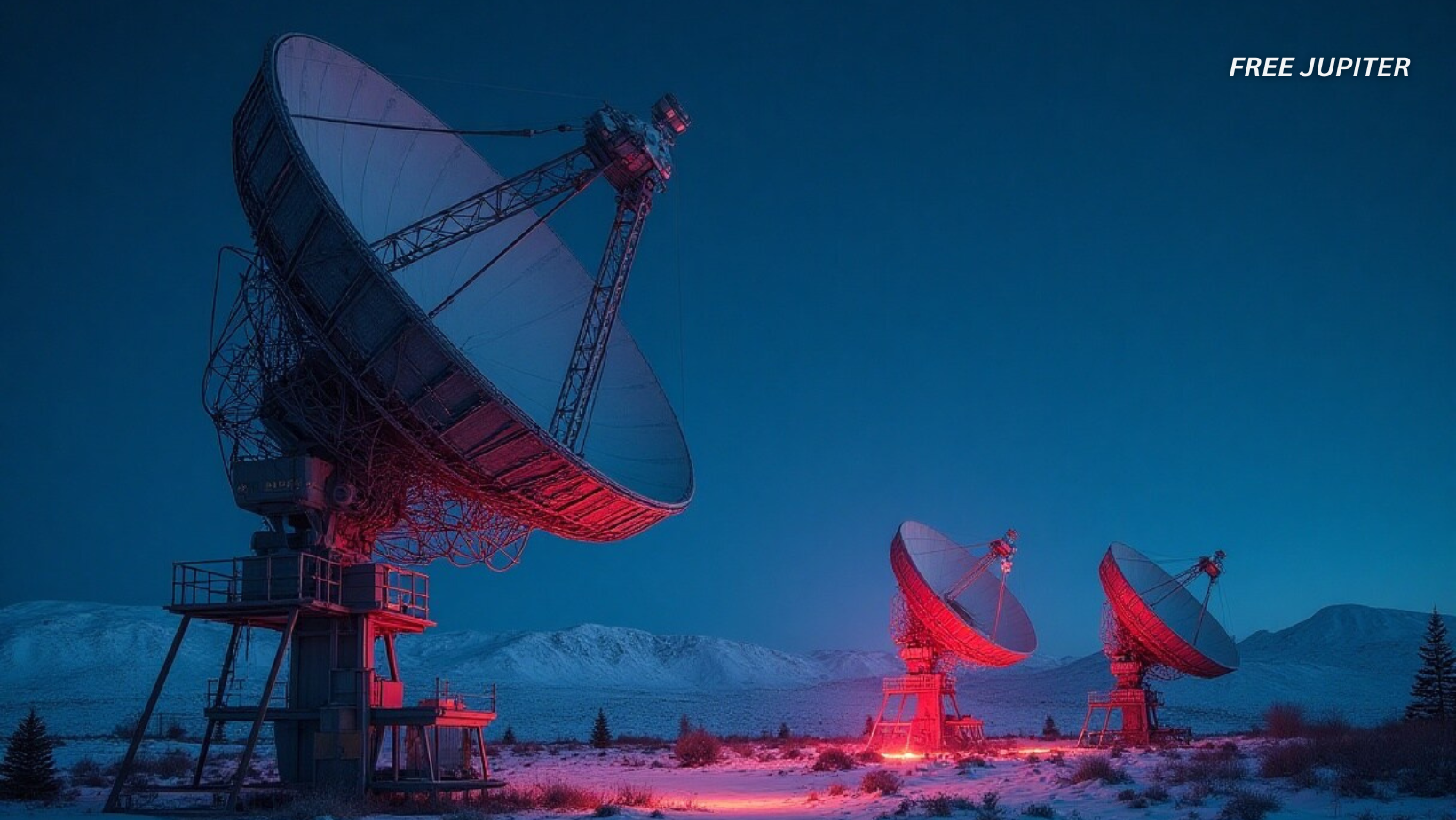Friendly Note: FreeJupiter.com shares general info for curious minds 🌟 Please fact-check all claims—and always check health matters with a professional 💙
Astronomers have recently stumbled upon a cosmic enigma unlike any other: a celestial source emitting a repeating radio signal deep within the dense Galactic Plane. This discovery, made by a team from Australia’s national science agency, CSIRO, has left scientists both excited and perplexed as they attempt to decode its origins and nature.
A Signal That Defies Expectations
The unusual object, designated ASKAP J1832-0911, was detected using the ASKAP radio telescope situated on Wajarri Country in Australia. What immediately caught researchers’ attention was its distinctive pattern—a radio pulse recurring every 44 minutes. This timing is extraordinarily long compared to typical radio pulses from known cosmic sources like pulsars, which usually flash within milliseconds to seconds.
ASKAP J1832-0911 belongs to a newly recognized category of astronomical phenomena known as long-period transients (LPTs). These objects emit bright bursts of radio waves at intervals ranging from minutes to several hours. As lead researcher Ziteng (Andy) Wang explained, “Long-period transients are a recently identified class of cosmic objects that emit bright flashes of radio waves every few minutes to several hours. This is much longer than the rapid pulses we typically detect from dead stars such as pulsars.” Despite this classification, the exact nature of LPTs remains elusive.
Unraveling the Mystery: Multi-Wavelength Clues
What makes ASKAP J1832-0911 particularly intriguing is that its radio pulses coincide with high-energy X-ray bursts detected by NASA’s Chandra X-ray Observatory, which was serendipitously observing the same region of the sky. This simultaneous emission of radio waves and X-rays suggests a complex and energetic process at work, possibly involving magnetic fields or particle acceleration mechanisms previously unknown in such objects.
The team’s examination of archival data revealed no prior evidence of this source before their discovery, implying a sudden activation event. According to Wang, “This suggests something dramatic happened shortly before we first detected it—something powerful enough to suddenly switch the object ‘on’.” Following a relatively quiet phase in early 2024, ASKAP J1832-0911 exhibited a dramatic increase in activity by February, reaching radio brightness levels rarely seen in the sky, with fewer than 30 known objects achieving similar intensity.
A Cosmic Puzzle: What Could ASKAP J1832-0911 Be?
Despite extensive analysis, ASKAP J1832-0911 does not fit neatly into existing astrophysical categories. It could be a magnetar—a type of neutron star with an extremely strong magnetic field—or possibly a binary star system where one member is a highly magnetized white dwarf. Both scenarios involve stellar remnants known for their magnetic properties, but neither fully accounts for the observed radio and X-ray behavior.
Dr. Wang remarked, “This object is unlike anything we have seen before. ASKAP J1832-0911 could be a magnetar or a pair of stars in a binary system where one is a highly magnetized white dwarf. However, even those theories do not fully explain what we are observing. This discovery could indicate new physics or novel models of stellar evolution”.
Broader Implications: A New Window on the Cosmos
The detection of X-ray emission from ASKAP J1832-0911 is particularly significant because it hints that other long-period transients might also emit in X-rays, a possibility previously unconsidered. Professor Nanda Rea from the Institute of Space Science in Spain highlighted the importance of this finding: “Finding one such object hints at the existence of many more. The discovery of its transient X-ray emission opens fresh insights into their mysterious nature”.
This revelation could transform our understanding of these rare cosmic sources, potentially uncovering a whole new population of objects that have so far escaped detection due to their intermittent and long-duration signals.
Read more: New Study Reveals How The First People To Inhabit America Got There
The Road Ahead: Continued Exploration and Observation
To unlock the secrets of ASKAP J1832-0911 and its kin, astronomers plan to conduct further observations, particularly in X-ray wavelengths, to gather more data on these elusive signals. Dr. Tong Bao of the Italian National Institute for Astrophysics expressed enthusiasm about the ongoing research: “We will continue to hunt for clues about what is happening with this object, and we’ll look for similar objects. Finding a mystery like this isn’t frustrating—it’s what makes science exciting!”.
The study detailing this discovery has been published in the journal Nature, marking a milestone in the exploration of long-period transients and their place in the cosmic landscape.
Contextualizing Within Recent Discoveries
ASKAP J1832-0911 is not alone in presenting astronomers with perplexing repeating radio signals. Another intriguing example is a signal repeating every two hours, traced back to a binary system consisting of a white dwarf and a red dwarf star. This system, located about 1,600 light-years away, emits radio pulses thought to arise from the interaction between the magnetic fields of the two stars.
Such findings challenge the traditional view that long-period radio bursts originate solely from neutron stars or magnetars. Instead, they suggest that binary systems involving white dwarfs can also produce these signals, broadening the range of astrophysical phenomena responsible for such emissions.
Theoretical Considerations and Speculations
The nature of these long-period transients raises compelling questions about stellar evolution and magnetic interactions. Some hypotheses propose that the radio and X-ray emissions result from charged particles streaming from one star and interacting with the magnetic field of its companion, generating bursts of radiation. For instance, in systems like AR Scorpii, a red dwarf’s charged particle wind collides with a white dwarf’s magnetic field, producing periodic radio wave.
Alternatively, the concept of a “white dwarf pulsar” has been suggested—a white dwarf exhibiting pulsar-like behavior due to its magnetic field and rotation. While this idea remains theoretical, discoveries like ASKAP J1832-0911 and similar systems provide tantalizing evidence that such exotic objects might exist.
Conclusion: A Universe Full of Surprises
The discovery of ASKAP J1832-0911 and its enigmatic repeating radio and X-ray signals exemplifies how the universe continues to defy our expectations and expand the boundaries of astrophysical knowledge. Each new finding not only solves some mysteries but also opens the door to many more questions about the nature of cosmic phenomena.
As radio telescopes like ASKAP and observatories such as Chandra continue to probe the skies, the scientific community eagerly anticipates uncovering more about these mysterious long-period transients. Their study promises to deepen our understanding of stellar remnants, magnetic fields, and the dynamic processes shaping our galaxy.
In the grand tapestry of the cosmos, ASKAP J1832-0911 stands out as a remarkable thread—one that beckons astronomers to unravel its secrets and, in doing so, enrich our comprehension of the universe’s vast and varied wonders.










